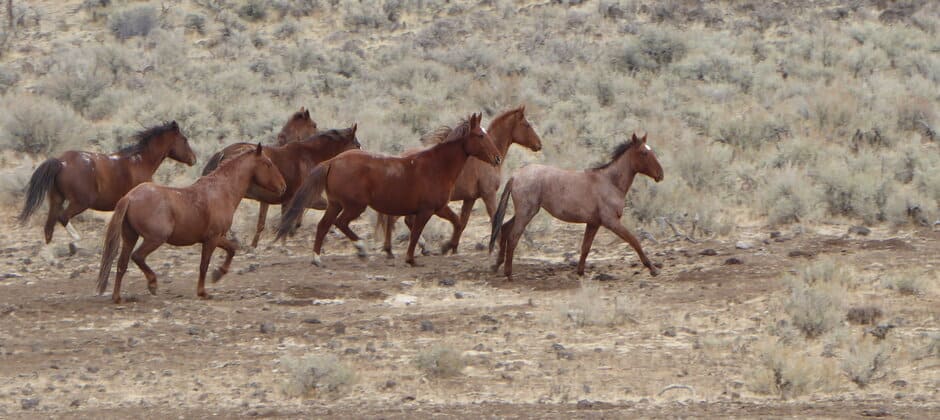Share this article
Wild horse and burro populations decrease in past year
The number of wild horses and burros on public lands has decreased for the first time in almost a decade, according to a new report from the Bureau of Land Management.
The reduction appears to indicate that the recent uptick in the removal of animals from public lands is having the desired effect.
The report estimates that 86,189 wild horses and burros currently range across 27 million acres of BLM-managed public lands in the western United States. Those numbers are down 9% from last year’s count. However, the current population of the ecologically feral animals is still far above the agency’s established appropriate management level of 26,785 animals — the maximum numbers that those public lands can sustain without damage to vegetation, soils and other resources.
The Wildlife Society has regularly advocated for federal agencies to reduce free-roaming horse and burro populations on public lands. As a non-native invasive species, horses and burros compete with native wildlife and damage their habitats.
The BLM is currently operating under a plan to reduce horse and burro numbers developed during the last administration. Under that plan, the agency is combining permanent removals from the range using fertility control to reduce population numbers. The agency expects to remove 20,000 horses and burros and treat an additional 9,000 with some type of fertility control and returned to the range.
Given legal limitations on management options, removing that many animals from the range each year comes with its own challenges, though. The lack of authority for lethal management means the agency has to secure pastures and holding facilities to house them, sometimes permanently, or find adoptive homes. Recently, concerns have arisen about the fate of some horses adopted out by the BLM, with some groups alleging that many end up at slaughter houses. The agency is currently investigating those allegations.
Under the administration’s budget request, the BLM would receive $152 million in Fiscal Year 2022 to continue implementing the plan. The recently passed House Interior appropriations bill would provide $162 million and require that $11 million be used to for fertility control vaccines.
The National Wild Horse and Burro Advisory Board, a federal advisory committee that provides advice and recommendations to the BLM and the U.S. Forest Service as the agencies carry out their responsibilities under the 1971 Wild and Free-Roaming Horses and Burros Act, met recently to discuss issues related to wild horse and burro management. The adoption program was one of the topics discussed; the board issued a statement supporting BLM’s investigation of the program and any effort to ensure the welfare of adopted horses and burros.
The advisory board also discussed the drought conditions sweeping the western United States and possible impacts on wild horses and burros. The board recommends that the BLM develop an emergency action plan to mitigate the effects of the drought on wild horses and burros.
Read TWS’s Issue Statement on Feral Horses and Burros in North America and watch the Horse Rich and Dirt Poor documentary film.
Header Image: Wild horse and burros populations on public lands have dropped in the past year, according to a new report from the Bureau of Land Management. Credit: BLM Washington & Oregon








